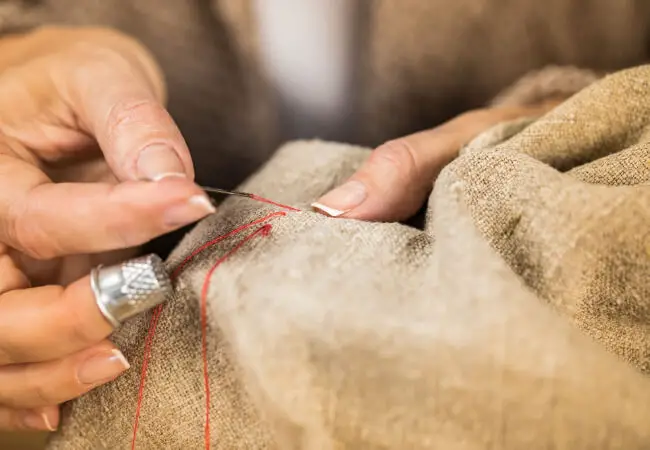The machines that produced fabrics by intermeshing or interloping of one or one set of yarn are called Knitting Machine.
Knitting Machines Are Divided As Follows –
1. Weft Knitting Machine
2. Warp Knitting Machine
1. Weft Knitting Machine
A machine in which the fabric formation occurs by the interlacement of loops formed simultaneously across the full width of the fabric from a system of yarns which are fed to the needles substantially in the direction of the length of fabric.
2. Warp Knitting Machine
Other loop forming and combined technique machines: Machines that form the fabric by the technique of intermeshing of yarn loops but which cannot be defined either as weft or as warp knitting machines.
Knitting Needles
A needle is the principal knitting element. Knitting Needles are divided into two categories according to their functions as follows
1. Independent Needles:
Needles that can slide in the needle bed and be moved individually during the stitch or loop forming process.
2. United Needles:
Needles that are fixed in the needle bar and which can only be moved in unison during the stitch or loop forming process.
Number Of Feed System:
On the circumference of a circular knitting machine up to 100 knitting cam sets can be mounted, each cam set fed with a separate yarn. This results in obtaining 160 knitted in courses in one machine revolution.
Specification Of Knitting Machine:
The needle beds and needle bars, and thus the knitting machines, are specified with three features, namely:
1. The working diameter ( Circular needle beds and needle bars) Or The working width (Flat needle beds and needle bars)
2. The needle gauge or needle pitch.
1. The Working Diameter:
The diameter of a knitting machine is measured at the bottoms of two opposite needle grooves in a cylinder or at the tops of two opposite needles in a circular bar and is usually expressed in inches.
2. The Working Width:
The working width of the machine should not be miss used with the “actual working width”. The working width of a knitting machine is a measure (in cm or inches) describing the distance between the first and last needle in a flat needle bed, whilst the “actual working width” is the distance between the first and last needle actually used in the needle bed during knitting.
3. Machine Or Needle Gauge:
The needle gauge of a knitting machine (also called cut or gage) is a measure expressing the number of needles per a unit of the needle bed (bar) width.
Gauge, N = How many needles are used in one English inch.
N= Number Of Needles/One English Inch.
Highest needle gauge is about 60 and lowest needle gauge is about 2 to 2.5.
The needle pitch is the distance between two neighboring needles in the same needle bed (bar), from the center of a needle to the center of the neighboring needle.
Relationship between the needle gauge and the needle pitch is as follows:
Needle Pitch (Length Units / Needle) = 1/Needle Gauge (Length Unit)
The pitch or distance between one needle and another is proportional to the needle gauge or thickness and therefore to the space available for the yarn. As the diameter of yarn is proportional to its count, a relationship exists between the range of optimum counts of yarn which may be knitted on a particular machine and its machine gauge.
Machine gauge thus influences the choice of yarn and count and affects fabric properties such as appearance and weight. For a given machine diameter or width, finer gauge machines tend to knit a wider fabric as more wales are involved.
For example, a 30″ diameter circular machine might have 1716 cylinder needles in 18 G and 1872 cylinder needles in 20G. Coarse gauge machines have latch needles with larger dimensions requiring greater movements. During knitting, the size of the knitting cams is correspondingly large so fewer cam systems can be accommodated around a given machine diameter (for example 30′) so therefore coarser gauge machines often have fewer feeders.







